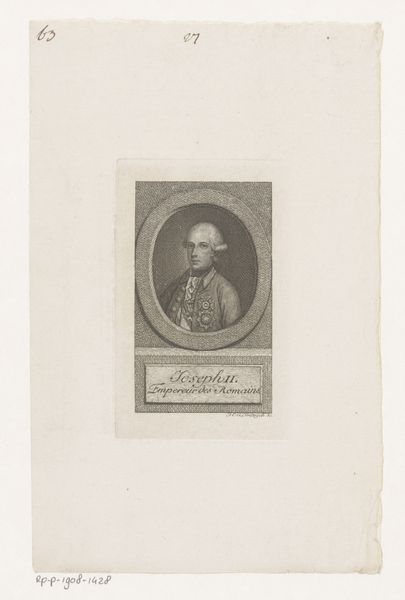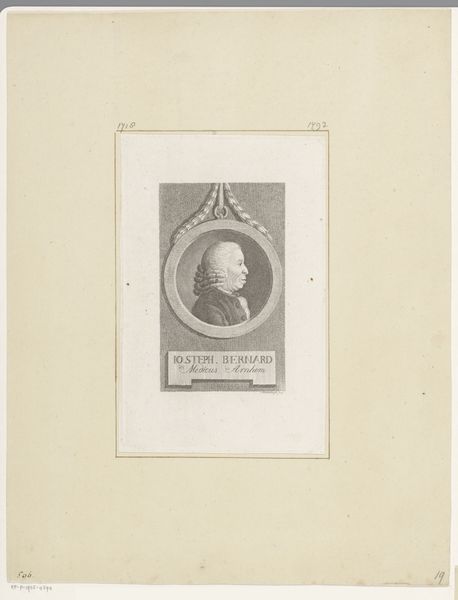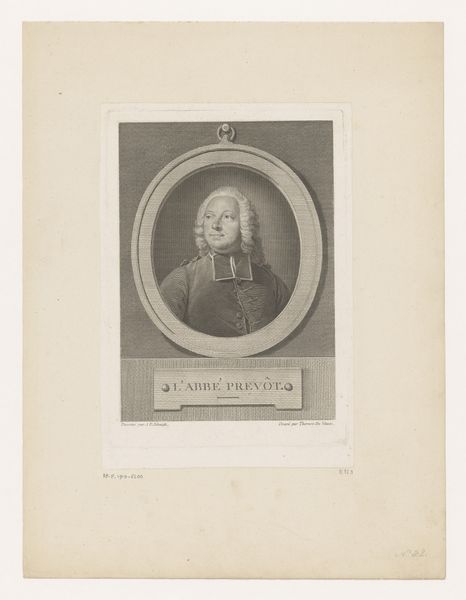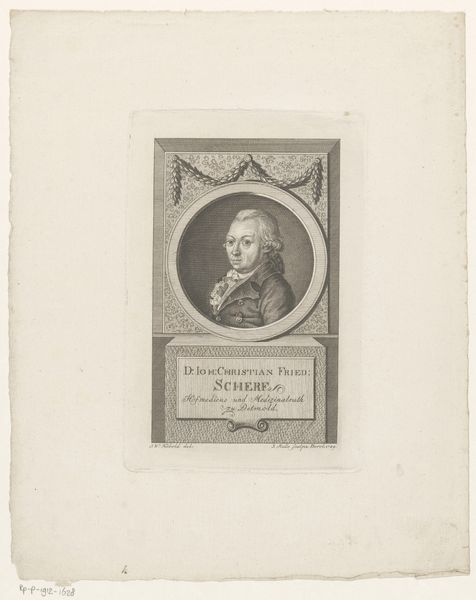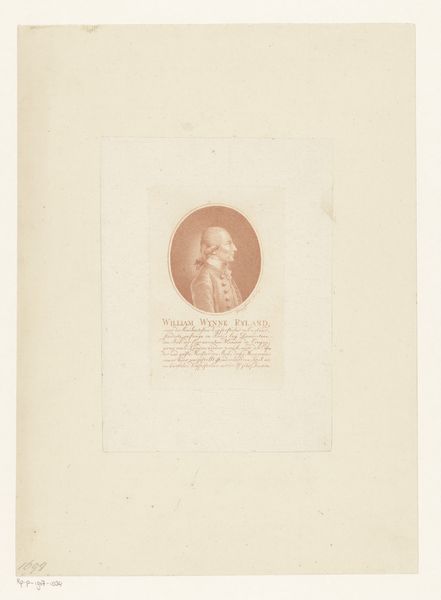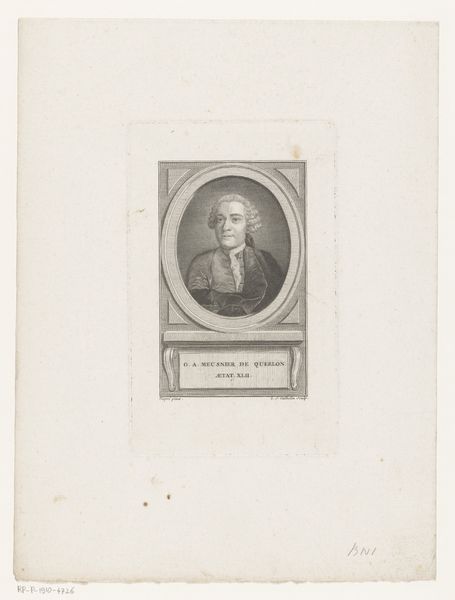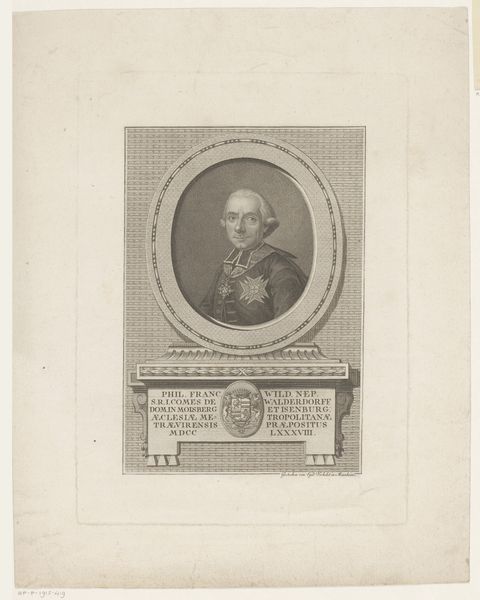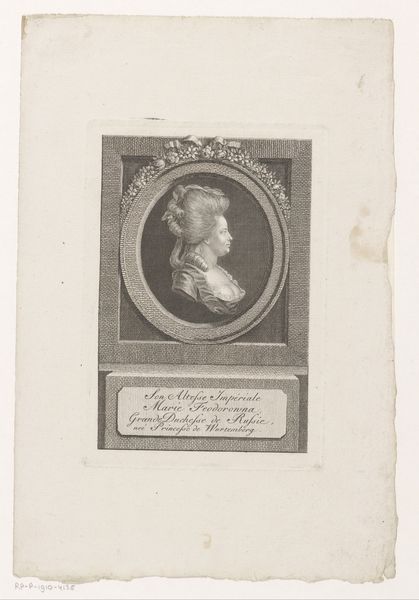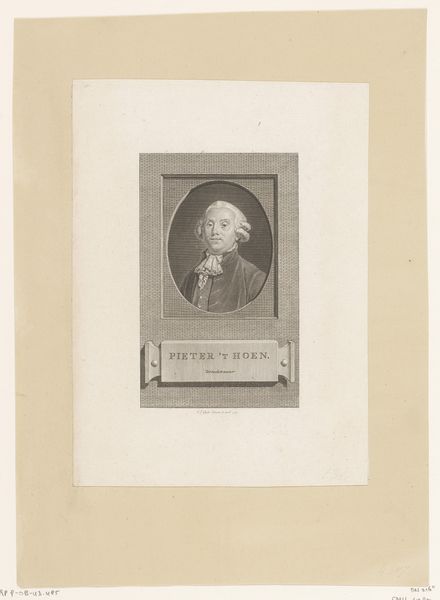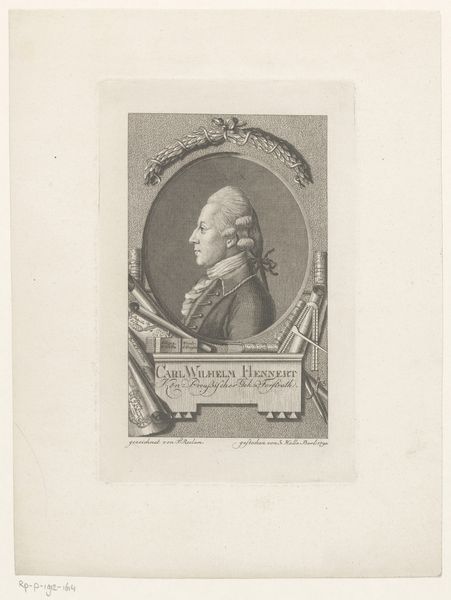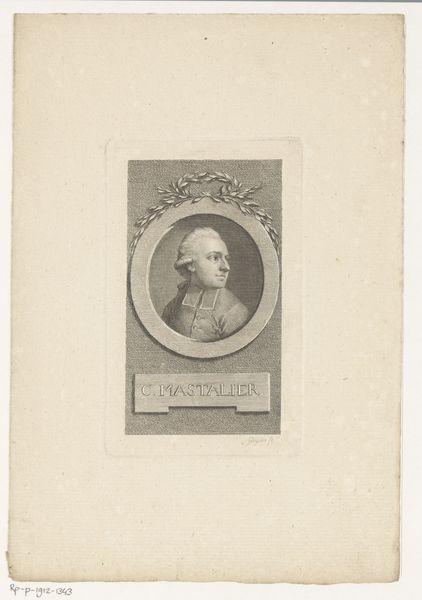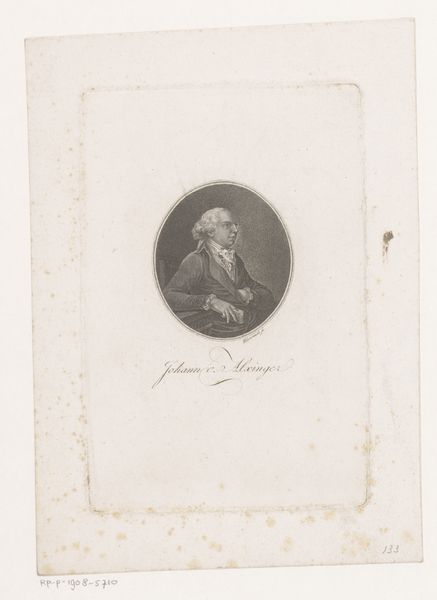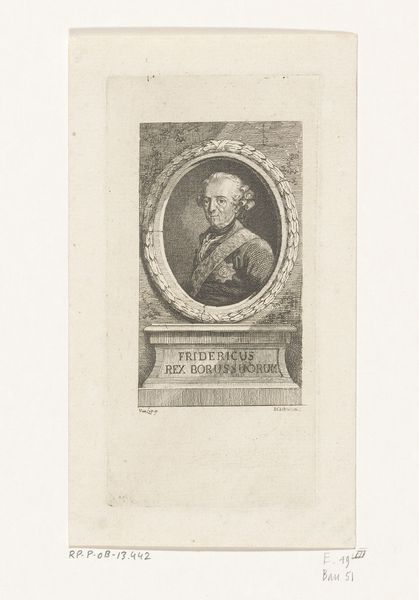
engraving
#
portrait
#
neoclacissism
#
old engraving style
#
15_18th-century
#
history-painting
#
engraving
Dimensions: height 216 mm, width 163 mm
Copyright: Rijks Museum: Open Domain
Editor: This is an engraving from 1788 of "Portret van Karel van Brunswijk-Wolfenbüttel" by Karl Schröder. It gives off this very formal, almost austere vibe. What's your take on this piece? Curator: The formality is palpable, isn't it? But it’s so much more than just a stiff portrait. Think about the late 18th century – the Enlightenment, the rumblings of revolution. These portraits of nobility become documents in a deeply unequal power dynamic. Who had access to representation? Who controlled the narrative? What is absent from this image? Editor: That’s a good point. It feels so…removed from any kind of social context just looking at it now. The individual feels isolated. Curator: Exactly! And that isolation is key. It represents the gilded cage of the aristocracy. Notice how the crisp lines of the engraving style contrast with the softness of his ruffled collar. It's a deliberate aesthetic choice, mirroring the tensions of the time, clinging to formality, but challenged by nascent ideas of equality and the rise of the individual. Also, the portrait seems to deliberately invoke the visual vocabulary of classical antiquity...why? Editor: To suggest he is of the ruling class? Curator: Indeed. Neoclassicism visually tied the sitter to legacies of power. Consider also how gendered the practice of portraiture was! Editor: So, this isn't just a portrait of a duke, but a statement about power, privilege, and the fragility of the old order during a time of massive upheaval. I see it so differently now. Curator: Precisely! It's about unpacking those layers of meaning. These images participate in a complex and critical discussion of class and historical forces. It invites us to challenge assumptions and broaden our perspectives.
Comments
No comments
Be the first to comment and join the conversation on the ultimate creative platform.
